Turning Animals Into Drones And Helicopters
Bart Jansen, Copter Company
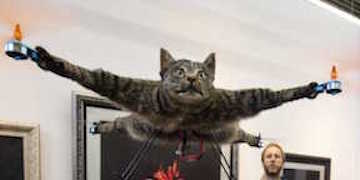 In 2012, Bart Jansen's cat was unfortunately struck and killed by a car. Instead of cremating or burying "Orville" (named after the Wright Brothers), he turned him into a drone. Despite outrage from cat-owners, he defends the action as a tribute to his furry-friend. Many other pet owners have asked for his services since. Now he plans to turn a cow into a helicopter.
In 2012, Bart Jansen's cat was unfortunately struck and killed by a car. Instead of cremating or burying "Orville" (named after the Wright Brothers), he turned him into a drone. Despite outrage from cat-owners, he defends the action as a tribute to his furry-friend. Many other pet owners have asked for his services since. Now he plans to turn a cow into a helicopter.
Originally, Bart was having a huge mouse problem and decided to get two cats. He found two cats that were brothers and adopted them both. After Googling famous brother pairs, he settled on the Wright Brothers and named them Orville and Wilbur. Unfortunately when Orville was around 5-years-of age, he was hit by a car.
When Bart was a young boy, he used to collect everything he would find walking through the fields and the forest. He always came home with bits of dead animals, as he was interested in the biology of it all, even when it smelled.
After he went to the Art Academy, he started doing a book project about road kill. He then actually put real road kill in a book. He didn't use pictures; because he didn't have to make pictures, as they were already so flat they could just fit as a page. So it was a completely cynical book. As you can image, his road kill scrapbook book was quite heavy as well.
He explains it by imagining stacking cats onto squirrels onto hedgehogs; the pile gets a little bit wobbly. So he put them between wooden pages. It was an actual book with a steel ring through it, allowing you to flip the pages between the different animals. Then there was the smell. Bart tells us it was really bad because it was crudely taxidermied, just the way he found it. It was an art project, because he had been collecting animals for three months.
A couple of years later after making his book, his own cat got killed by car, which he felt was ironic. However, after the car mishap, his cat wasn't flat and you could hardly tell that a car hit him, but he was no longer there.
Bart decided not to put Orville into his book, as there was already a cat in there. So he decided to wait for a little bit to decide what to do. In the meantime, he put Orville's body in his freezer until his girlfriend told him to get rid of it.
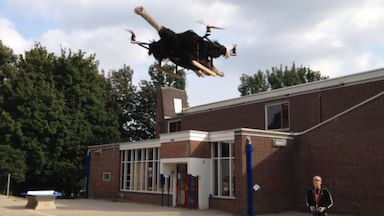 It all of a sudden hit Bart that Orville was an aviator and he needed to fly. Bart had no other choice; he felt there was nothing else he could do. He had to make him fly.
It all of a sudden hit Bart that Orville was an aviator and he needed to fly. Bart had no other choice; he felt there was nothing else he could do. He had to make him fly.
Orville, his dear little cat, then turned into a project. But he had no idea how he was going to make it happen. Bart ended up making him into a drone by putting propeller blades on all four of his legs.
Bart has received mixed feelings from people about Orville the drone and was shocked by the people who were upset. He said he could not have imagined beforehand that that would happen. It seemed that all of a sudden every cat lover in the world was yelling at him. That was never meant to happen. He just wanted to make a tribute for his cat and thinks he did a well job. If he had just buried or cremated Orville, he wouldn't be known. Bart says now everybody bloody knows Orville.
Orville now lives forever and is still with Bart. Every now and then, just like walking a dog, he flies his cat. He even gets invited to festivals with Orville.
But Bart didn't stop there.
Now, Bart has a cow in his freezer. Well, not a whole cow, he tells us. It's neatly folded and it's stuck in there because the motor powering that project is too expensive for now and he is waiting on the funds. When he is ready for the cow, he will actually have to unplug the freezer and wait for two days for it to thaw so he can get it out.
Bart explains that he has done a couple of helicopters, jets and things like that, but with other animals. For this new project, what he wanted to do from the start was to make a helicopter for himself. He wanted to make a real helicopter, a man transport-flying vehicle flying.
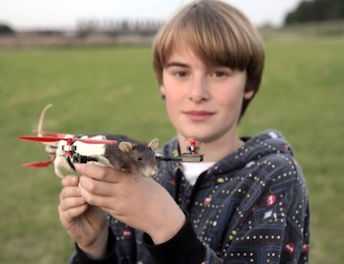 So why a cow? He actually thought about designing a flying motorcycle. So he went away from the animal copters but thought everybody's doing it. The Germans are doing it. The Chinese are doing it. The Americans are probably doing it. He didn't want to do the design thing and get stuck in there and try and make an actual airplane, because everybody else can do that better than he can. What he needed to do is stay in his marginal space and just find an animal that's big enough to fit a person.
So why a cow? He actually thought about designing a flying motorcycle. So he went away from the animal copters but thought everybody's doing it. The Germans are doing it. The Chinese are doing it. The Americans are probably doing it. He didn't want to do the design thing and get stuck in there and try and make an actual airplane, because everybody else can do that better than he can. What he needed to do is stay in his marginal space and just find an animal that's big enough to fit a person.
Over the years, Bart tells us his taxidermy skills still haven't improved since his first road kill scrapbook. He has even stopped doing taxidermy himself, because they end up really badly. So when he needs something to actually look like it was before, he has to ask someone else.
Not surprisingly, people have come to Bart and asked him to turn their animals into helicopters. However, he explains that these are quite timely projects and so quite costly as well. People always want to know what it costs. But when he starts adding things up like time, materials, motors, engines and even GPS systems, no one actually goes through with it.
Bart tells us that his Copter Company is not the best running company in the world, but he has the most fun!
Visit Website
What Vaccines Does My Pet Really Need?
Dr. Jean Dodds, Hemet
 There's no need to over-inoculate your pet with potentially harmful vaccines. Dr. Jean Dodds tells us what injections are necessary and how often. Dr. Dodd's also discusses the downside of over-vaccinating your pet.
There's no need to over-inoculate your pet with potentially harmful vaccines. Dr. Jean Dodds tells us what injections are necessary and how often. Dr. Dodd's also discusses the downside of over-vaccinating your pet.
Dr. Jean Dodds is the founder of Hemopet, a full-service facility consisting of an animal blood bank, greyhound rescue and adoption and specialty veterinary diagnostic laboratory. She also is considered one of the foremost veterinary experts on vaccinosis.
So what vaccinations do we really need for our pets? Dr. Dodds explains that as far as dogs and cats are concerned, it's very important that the kitten and the puppy received the appropriate vaccination series when they're young. So the first point about that is not to give them too young, because their immune system's not ready. Remember, vaccines are not just the vaccine things you're protecting against, but they also have what are called excipients, fetal cap serum, tissue culture remnants, etc. So you're basically giving a mixture of materials when you vaccinate. So don't want to give them too young and you don't want to give them when they are receiving maternal immunity from the mother's colostrum milk, the first milk when they're born, because that's going to neutralize the vaccine. The person then thinks their animal has been protected when it may not have been properly vaccinated at all. So appropriately spaced vaccines when they're puppies and kittens.
Then a year later you do a titer. You used to have to ask your veterinarian to do a titer test, but that's changed. In the last 10 years, veterinarians are required by the policies in North America to ask the client if they would like to have a booster, a deferral, or a titer.
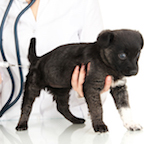 A tighter is a measure of the amount of antibody in the blood of the individual, whether it's a human or an animal. And if the antibody level in the blood is sufficient to cause protection against the disease, that animal or person does not need to have a booster. Rabies vaccine is the only exception. For dogs and cats throughout North America, and most of the world, vaccines for rabies are required. Titers are not acceptable in any country of the world. You have to have by law two rabies vaccines given within the first 12 months of each other. The first one has to be done before 24 weeks or six months of age. Unfortunately, all but two of the currently licensed canine rabies vaccines contain thimerosal, which is mercury. We do not want to put mercury into the body, certainly not of young animals, and certainly never. We've even taken it out of fillings in our teeth. You have to be sure that the veterinary clinic that is giving the rabies vaccine carries one of the two commercial vaccines that are called Thimerosal Free or TF, which means they don't contain any mercury.
A tighter is a measure of the amount of antibody in the blood of the individual, whether it's a human or an animal. And if the antibody level in the blood is sufficient to cause protection against the disease, that animal or person does not need to have a booster. Rabies vaccine is the only exception. For dogs and cats throughout North America, and most of the world, vaccines for rabies are required. Titers are not acceptable in any country of the world. You have to have by law two rabies vaccines given within the first 12 months of each other. The first one has to be done before 24 weeks or six months of age. Unfortunately, all but two of the currently licensed canine rabies vaccines contain thimerosal, which is mercury. We do not want to put mercury into the body, certainly not of young animals, and certainly never. We've even taken it out of fillings in our teeth. You have to be sure that the veterinary clinic that is giving the rabies vaccine carries one of the two commercial vaccines that are called Thimerosal Free or TF, which means they don't contain any mercury.
According to Dr. Dodd's Vaccination Protocol for Dogs, vaccines should be given as follows:
9 - 10 weeks of age: Distemper + Parvovirus, MLV
14 - 15 weeks of age: Distemper + Parvovirus, MLV
18 weeks of age: Parvovirus only, MLV
20 weeks or older, if allowable by law: Rabies (give 3-4 weeks apart from other vaccines)
1 year old: Distemper + Parvovirus, MLV. This is an optional booster or titer. If the client intends not to booster after this optional booster or intends to retest titers in another three years, this optional booster at puberty is wise
1 year old: Rabies (give 3-4 weeks apart from other vaccines - 3-year product if allowable by law)
However, if you're in the face of a Parvovirus epidemic, and that happens every spring and fall, you couldn't give a single Parvo vaccination only to a puppy, if you're not sure about the immunity, at six weeks of age.
The national organizations in the veterinary profession have what they call core vaccines. Then they have noncore, which are optional vaccines. Many of those depend on where you live. So for example, Lyme disease is more common in certain parts of the east coast and in some parts of the northwest. So in areas where these diseases are not important, it is not recommended to vaccinate for them because it's not critical. You can do all kinds of testing to see whether the animal has been exposed to Lyme disease, for example, or whether the titers are good.
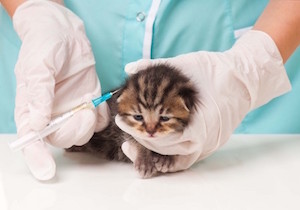 When it comes to leptospirosis, it's a zoonotic disease, which means that people and other mammals can catch it. Therefore it's a reportable disease. The problem is leptospirosis is not a common clinical entity except in certain parts around the Great Lakes, some areas of the northeast, some areas of the northwest, but is not in Southern California. The problem with leptospirosis is there are 200 serovar strains, of which they can only test antibody levels in seven. These are typically the seven important ones, but the current vaccines for the dog only have four strains of Lepto in there. So if the strains of leptospirosis that have been reported by the public health agencies in your region are a strain that's not in the vaccine, giving the vaccine won't help at all.
When it comes to leptospirosis, it's a zoonotic disease, which means that people and other mammals can catch it. Therefore it's a reportable disease. The problem is leptospirosis is not a common clinical entity except in certain parts around the Great Lakes, some areas of the northeast, some areas of the northwest, but is not in Southern California. The problem with leptospirosis is there are 200 serovar strains, of which they can only test antibody levels in seven. These are typically the seven important ones, but the current vaccines for the dog only have four strains of Lepto in there. So if the strains of leptospirosis that have been reported by the public health agencies in your region are a strain that's not in the vaccine, giving the vaccine won't help at all.
Dr. Dodds tells us about an email she recently received from a client who's veterinarian told them since they were in south Florida that they had to vaccinate for leptospirosis, because if their puppy went out and licked a puddle, it could die of this fatal disease. Dr. Dodds says that hysteria doesn't make any sense. The public doesn't understand that and Dr. Dodds says that veterinarians shouldn't frighten people. Vets need to talk to them about the exposure risk in the area they live in or will be traveling in.
A very important issue is hepatitis, Adenovirus 1, because we have no vaccines for that anymore because they produce blue eyes, or clouding of the cornea. We now have Adenovirus 2, which is part of the kennel cough complex. Adenovirus 2 vaccines are used to cross protect against infectious canine hepatitis. However, there have been no clinical cases for 15 years in North America. So why are we vaccinating for something that can cause significant adverse reactions when we don't have the disease?
Another issue is the Bordetella vaccine, which she is not recommending, that is sometimes given orally instead of the more preferred intra nasal route. The intra nasal route will stimulate interferon, which is a natural immunity in the puppy. So oral Bordetella stimulates interferon in the puppy and that protects against Adenovirus 2 and the other upper viruses like parainfluenza, even influenza. So you end up getting cross protection against hepatitis from the core by giving oral Bordetella.
Dr. Dodds does not recommend intranasal vaccines. She says the problem with intranasal sprays, when you spray it up the nose, it puts vaccine stuff all around the face of the animal and any other animal or person standing nearby. Think about the eyes. Think about blinking. Think about the exposure to that. If you give it orally, it's much less likely to spray around the area and will just immunize that animal. So oral vaccines that are available are the way to go.
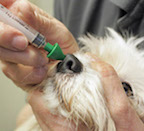 What about influenza? It's ubiquitous everywhere in the country. All crowded areas have this highly contagious virus, which consists of two strains, N2 and N8. So why are we vaccinating for it? Do we vaccinate ourselves every time we have the cold or flu? No. Only certain populations at specific risks are vaccinated. Dr. Dodds feels the same way about that for dogs.
What about influenza? It's ubiquitous everywhere in the country. All crowded areas have this highly contagious virus, which consists of two strains, N2 and N8. So why are we vaccinating for it? Do we vaccinate ourselves every time we have the cold or flu? No. Only certain populations at specific risks are vaccinated. Dr. Dodds feels the same way about that for dogs.
Do vaccines cause such things as sarcomas? Dr. Dodds explains that a vaccine induces sarcoma is a tumor at the injection site and yes, which was first recognized in a cat. It also occurs in dogs. She says and believe it or not, when the first papers showing the same thing occurred in the dog, it couldn't even be published in North America. They had to publish it in Europe. This is because nobody in North America wanted to deal with this potential risk for producing a tumor at the injection site. The injection site can also have a granuloma. That's a reaction almost to the irritation of having some of the materials, in what Dr. Dodds calls toxic tissue culture soup, put into a particular part of the body.
Dr. Dodds also helped establish The Rabies Challenge Fund Charitable Trust, which will determine the duration of immunity conveyed by rabies vaccines. The goal is to extend the required interval for rabies boosters to 5 and then to 7 years. This project depends primarily upon grassroots gifts for funding the costs of conducting the requisite vaccine trials.
Visit Website
Get Your Pet To the Vet Safely with No Escapees - Dr. Debbie
 A frightening situation occurred the other day at my veterinary hospital. Working inside my office, I could hear a woman's shrieks coming from the parking lot. I ran outside to find a woman with one dog on a leash, and the other dog skittering about the parking lot - the result of a slipped collar. The owner would approach the panicked dog and he'd retreat, darting under nearby cars. Those familiar with our hospital location understand its proximity to a busy intersection. Should the dog run in the wrong direction, he'd meet up with 45 mph traffic.
A frightening situation occurred the other day at my veterinary hospital. Working inside my office, I could hear a woman's shrieks coming from the parking lot. I ran outside to find a woman with one dog on a leash, and the other dog skittering about the parking lot - the result of a slipped collar. The owner would approach the panicked dog and he'd retreat, darting under nearby cars. Those familiar with our hospital location understand its proximity to a busy intersection. Should the dog run in the wrong direction, he'd meet up with 45 mph traffic.
My staff was outside in moments to assist the owner in retrieving her dog and safely escorted everyone into the building. Thankfully my client's few minutes of terror ended uneventfully. But that's not always the case. I've seen dogs run straight into the road, cat's leap from a family member's arms, and owners dive into oncoming traffic trying to catch an escaping pet.
The lesson is simple. Don't underestimate your pets' fears. Fear of car travel, new places or the veterinary office can cause a pet to behave in unpredictable ways. If you know your pet to be nervous with new people or new situations, be especially vigilant when transporting your pet in a vehicle.
Identify Your Pet
Use two methods of identification for best insurance your pet is returned to you if lost. Permanent identification with a microchip is a must and should be complimented with a collar and ID tags.
Restrain Pet in Vehicle
Keep your pet secure during travel and when the car door opens by using a doggie seatbelt. Small dogs and cats should be housed in a pet carrier which is secured with seatbelt to avoid undue carrier movement during travel. Do not allow cats and small pets to roam freely in the car. Cats have been known to take cover under car seats which may require sedation or seat removal to extract kitty from her hiding place.
Check for Proper Fit
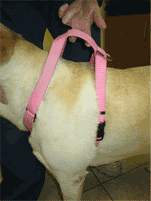

 A proper fitting collar allows 2 finger widths between the collar and pet's neck. Allow more than, and should your pet put on the brakes, he'll easily slip out of the collar. Poor fitting harnesses are just as dangerous and allow gap room which allows a back-peddling pet to wiggle out. Not sure if the collar is too loose? Snug the collar up one fitting in anticipation of your trip to the vet.
A proper fitting collar allows 2 finger widths between the collar and pet's neck. Allow more than, and should your pet put on the brakes, he'll easily slip out of the collar. Poor fitting harnesses are just as dangerous and allow gap room which allows a back-peddling pet to wiggle out. Not sure if the collar is too loose? Snug the collar up one fitting in anticipation of your trip to the vet.
Try Other Collar Styles
Even if you don't normally use a choker or pinch collar, consider using one when going to the vet's office. For thick necked dogs with smaller head size, try the Martingale collar, a fabric and metal combo collar that snugs down should your dog try to back out. Boisterous dogs that jump and leap when on leash may benefit wearing a head collar that fits over the muzzle. Ensure your collar choice is properly fitted, since any of these styles can fail if improperly fitted or used incorrectly.
Call Ahead
If you anticipate difficulties getting your pet to the vet's office, call ahead. Veterinary staff members are on the ready to help ensure your pet's visit is a safe one.
So, take a few minutes to consider your pet's travel safety before heading out on that next car trip, whether it is to the park, groomer or veterinary office. Your four legged friend will thank you, but may pout on the way there.
Featured veterinarian known as "Dr. Debbie" on national pet radio program, Animal Radio. Ebook author of "Yorkshire Terriers: How to Be Your Dog's Best Friend"; "Pugs: How to Be Your Dog's Best Friend"; "Mini Schnauzers: How to Be Your Dog's Best Friend"; and "Shih Tzu: How to Be Your Dog's Best Friend." Dr. Debbie's books.
Visit Website
Animal Radio News - Lori Brooks
 Pet Parents Pass on Perfect Home If Not Right for Their Pets
Pet Parents Pass on Perfect Home If Not Right for Their Pets
Pets are part of our family. So much so that according to a report, even if we found our perfect home and it wasn't right for our pets, we would pass on it. The survey for Realtor.com showed 75-percent of pet parents would say "no thank you" to their dream home if it wasn't right for their animals. Younger buyers were even more likely to forgo their dream home if it wasn't suited for their pet than older buyers, with nearly 80-percent of 18 to 54 year olds saying they would pass on the house, compared to 64-percent for buyers over age 55. When asked to rank the most important features, 45-percent of the homebuyers chose a large yard, more than a third picked outdoor space and 33-percent wanted a garage.
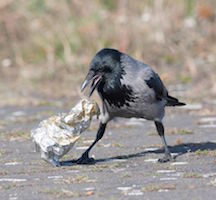 Birds Are Taught to Pick Up Trash
Birds Are Taught to Pick Up Trash
A French theme park has begun using six trained birds to pick up litter and cigarette butts. It's a big job for only six birds, as the park gets about 2 million visitors a year. In order to keep the grounds clean, the park wants to try out a low-tech option. The birds they plan on using are rooks, a member of the crow family. Under this new system, if the park's six rooks take a piece of trash to a special box, the device dispenses bird food. The educational theme park is hoping to show that "nature itself can teach us to take care of the environment." It all sounds great, but an expert on crows at Cornell Ornithology Lab doesn't believe it's possible. Still, the French park is the first business to test the method on a large scale. Hopefully, the birds won't be harmed from all the tobacco and nicotine.
Pets Are Not Immune To The Dangers Of The Opioid Epidemic
Researchers at the University of Colorado recently conducted a survey of nearly 200 veterinarians in the state about how opioid abusers may be using veterinary clinics to get drugs. The results revealed that 13-percent of veterinarians believe, or have suspected, that they have seen a client who purposefully injured their pet, made their pet sick or appear to be sick, just so they could get an opioid prescription. Even if the American Veterinary Medical Association considers reporting suspected animal abuse a responsibility of veterinarians, only 17 states have mandatory reporting laws.
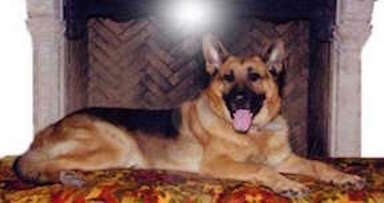 Richest Pets
Richest Pets
According to the Richest Pets List, there are some animals out there far richer than some humans will ever be. According to the list compiled by Compare the Market's Pet Insurance, the richest pet is a German Shepherd named Gunther IV worth over 375 million dollars. Gunther, who lives in Germany, inherited his wealth and has his own personal maid and butler, eats steak and caviar and has several multi million-dollar homes. In second place is Grumpy Cat, worth about 99 million dollars from all of her show biz deals. Taylor Swift's cat, Olivia Benson, is the third richest pet, worth about 97 million dollars from her lucrative acting career. Oprah's 5 dogs are worth $30 million, thanks to the trust fund she has set up for them. And in 5th place is Gigoo, a chicken in the UK who inherited 15 million dollars. A few other self-made American pets also made the top ten. Boo the Pomeranian came in at number 9 with an estimated worth of 8 million made off all his branded merchandise and Bart, the brown bear, who you've probably seen in movies and commercials came in at number 10.
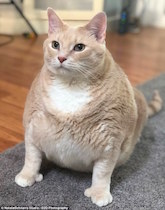 Instagram Has A 'Real Life Garfield
Instagram Has A 'Real Life Garfield
He may look like chubby Garfield, but this cat's name is Bronson and he was recently adopted from the West Michigan Humane Society. Not only is Bronson a polydactyl, meaning he has thumbs, but he's also tipping the scale at nearly 30 pounds. The three-year-old landed himself a perfect home with a couple that designs wall mounted cat furniture. They were happy to give Bronson a new home and help him lead a happier, healthier and more active life. Other than his large physique, Bronson has no other health problems so getting the extra weight off is important. His new mom and dad say they're aiming for him to lose a half a pound a month on a 375 calorie a day diet.
Benefits of Having Pets
A new study done for a home builder in the UK found that pet parents are not only healthier than those who don't have pets, but they also make more money; an extra $5,200 dollars a year more. Dog owners, they found, are more likely to exercise, even on cold or rainy days because they know their dog needs a walk. So pet owners are often more physically active, which was especially true among elderly people. The survey showed that pet owners also get a little more exercise from doing simple housework and pet cleanup. The survey responses discovered several positive trends associated with pet ownership. Aligning with previous research, the survey showed that pet owners were twice as active as people without pets, exercising around five times per week. Pet ownership also coincided with a higher likelihood of being married, having children and higher levels of job satisfaction. People who had pets were more likely to talk to their pet, which had a beneficial impact, with 16-percent of those surveyed saying they wouldn't talk to anyone during the day if they didn't have a pet.
 Listen to the entire Podcast of this show (#1037)
Listen to the entire Podcast of this show (#1037)





